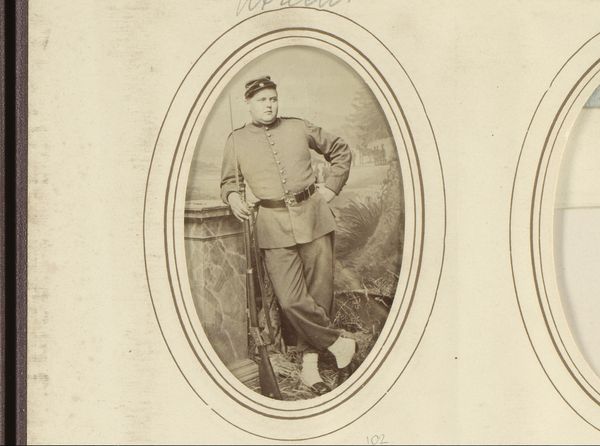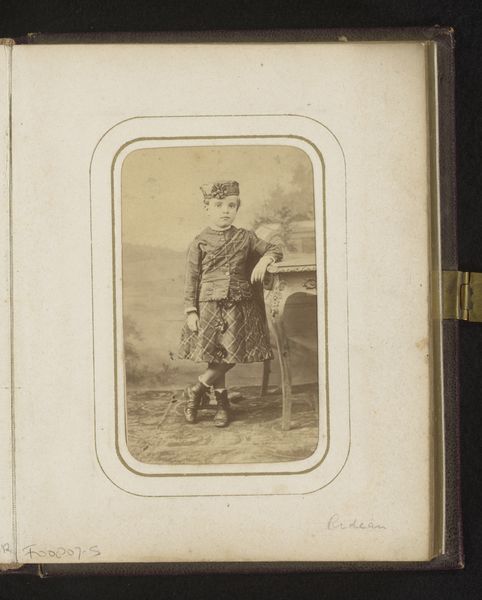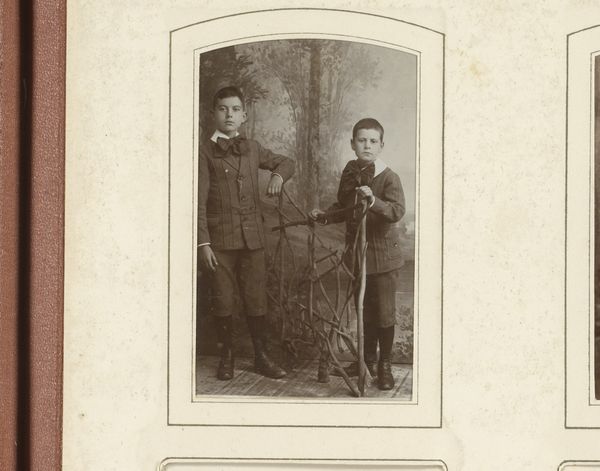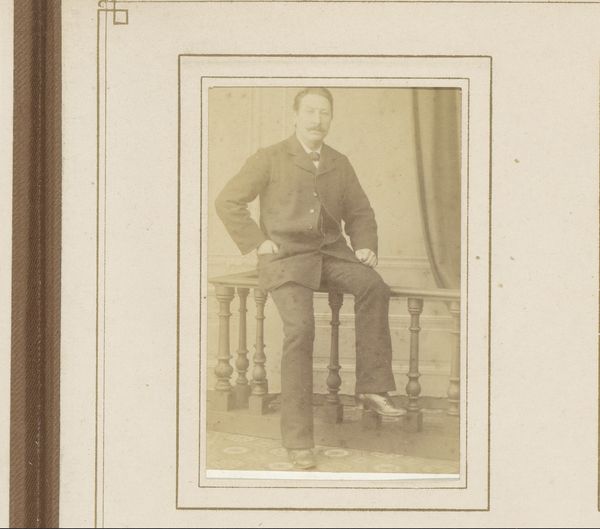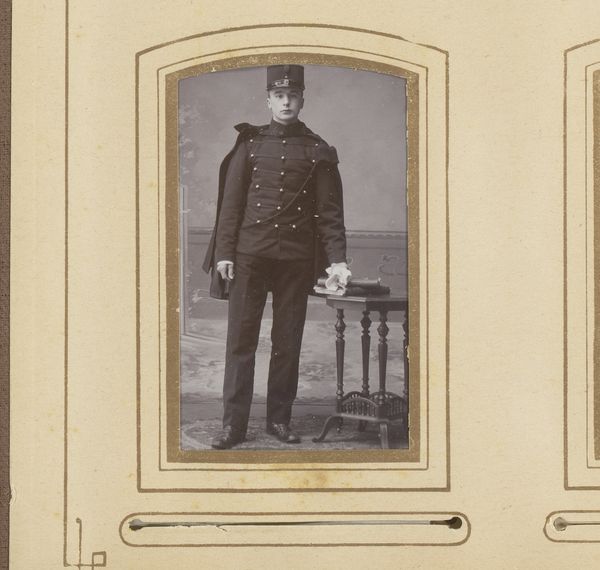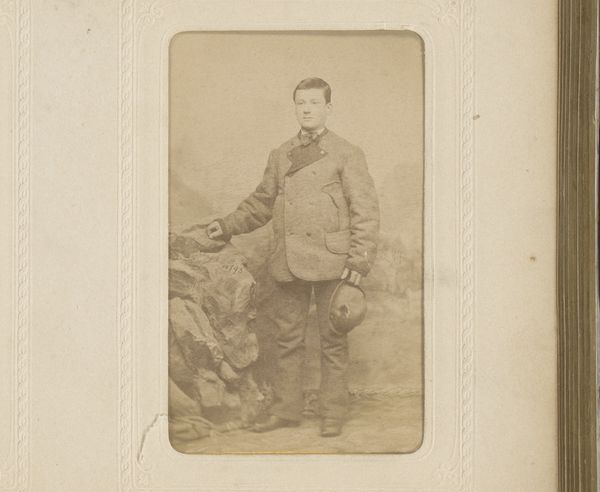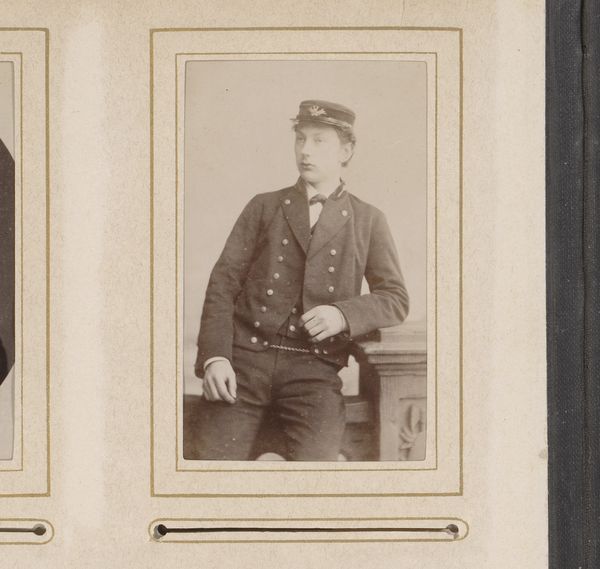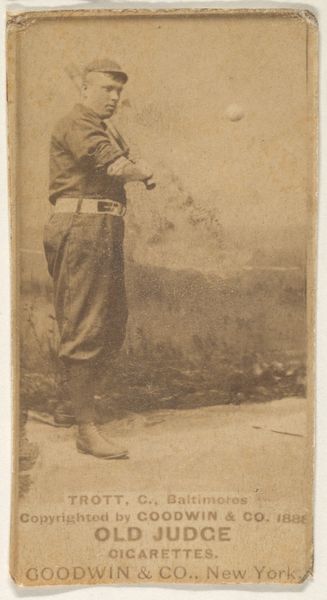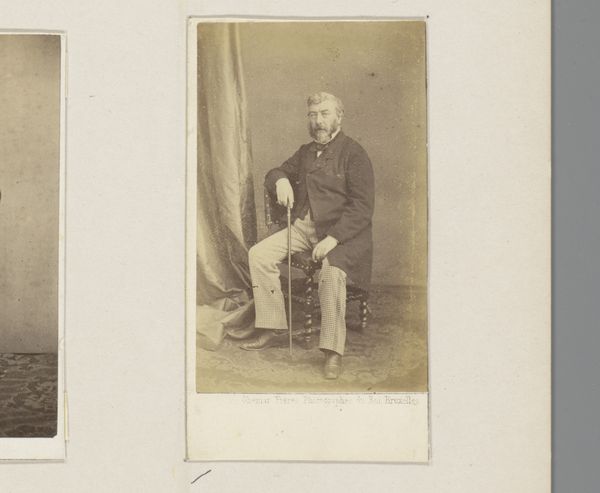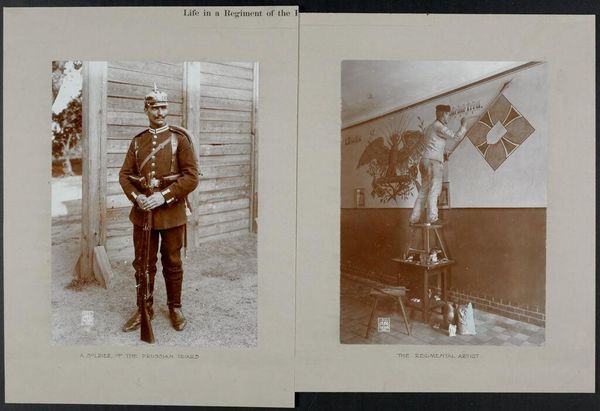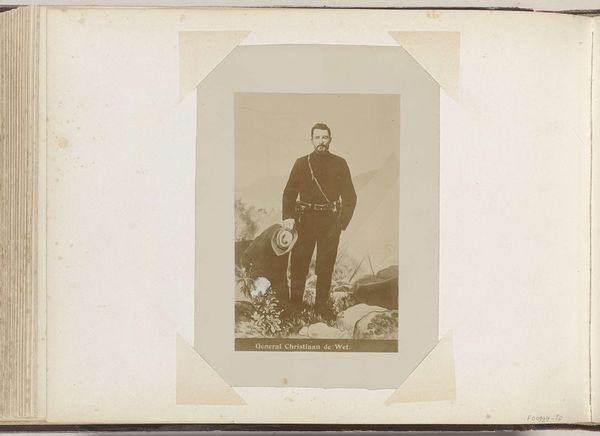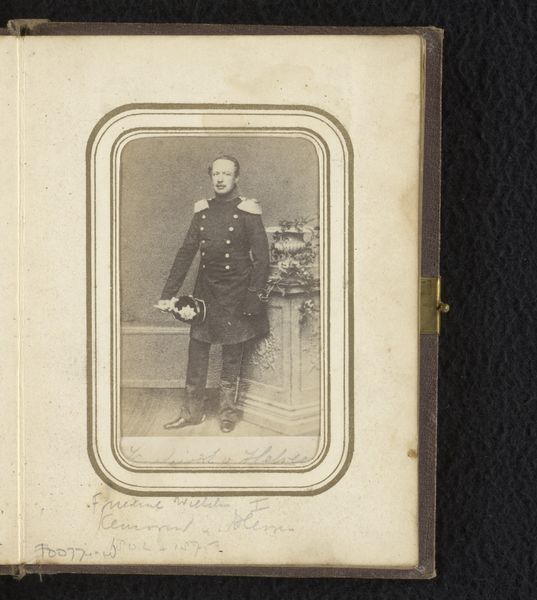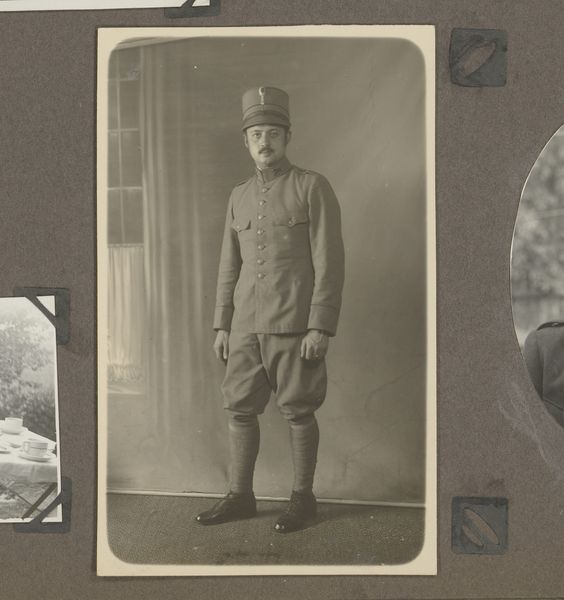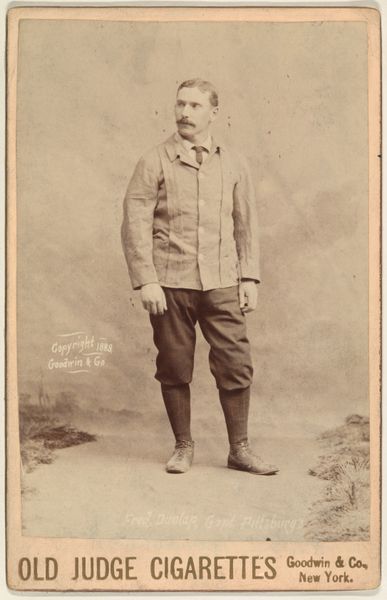
Portret van een Russische cavaleriesoldaat in zomertenue 1903 - 1904
0:00
0:00
#
aged paper
#
toned paper
#
vintage
#
muted colour palette
#
photo restoration
#
personal sketchbook
#
historical fashion
#
old-timey
#
19th century
#
watercolor
Dimensions: height 96 mm, width 62 mm
Copyright: Rijks Museum: Open Domain
Curator: This is a work entitled "Portret van een Russische cavaleriesoldaat in zomertenue," which translates to "Portrait of a Russian cavalry soldier in summer dress." It’s believed to have been made sometime between 1903 and 1904. Editor: My initial impression is one of austerity and subdued power. The limited palette lends the image a feeling of distance, despite the figure's direct gaze. Curator: The composition is interesting; the figure is presented full-length, standing against a neutral backdrop. Note the subtle tonal variations across the planes of his uniform—see how they articulate the form through chiaroscuro. It's all about light and shadow. Editor: And what a uniform. The cut and fit, down to the precise angle of his saber, speak to the strictures and privileges of class and the military during a period of vast geopolitical power struggles and rampant imperialism. I’m compelled to consider how this image reinforces and perhaps even subtly critiques those power structures. Curator: Precisely! The diagonal of the saber mirrors the angle of the strap across his chest. Also, let’s examine the brushstrokes. The artist's skillful use of watercolor has resulted in varied textures, which enrich our perception of his military dress. Notice the way light catches the buttons and the careful rendering of fabric. Editor: These visual elements serve a symbolic purpose too. How does the rigidity of his posture relate to Russian national identity during a time of revolution? The very fact that he’s presented in summer attire also raises questions about military life during a particular period. The sword he holds projects strength but maybe a latent form of defensive anxiety as well. Curator: I see your point about his stance, though, from a purely formalist standpoint, I'd add the position echoes and enhances the rigid verticals present within the painting's background. The texture and muted color palette help to project a sense of timelessness and even of noble sacrifice. Editor: And perhaps that perceived sense of nobility conveniently eclipses other narrative possibilities. The subject of this watercolor could well be complicit in historical injustices perpetrated in the name of military might, for example. His "noble" stance would have been impossible without systems of class privilege and colonialism. Curator: True enough. Perhaps it is time we examine art with a fresh set of lenses, understanding it in terms of its forms and historical contexts. Editor: Yes, by considering its production in relation to questions of gender, class, and identity to expand possibilities and prompt more conversations.
Comments
No comments
Be the first to comment and join the conversation on the ultimate creative platform.
